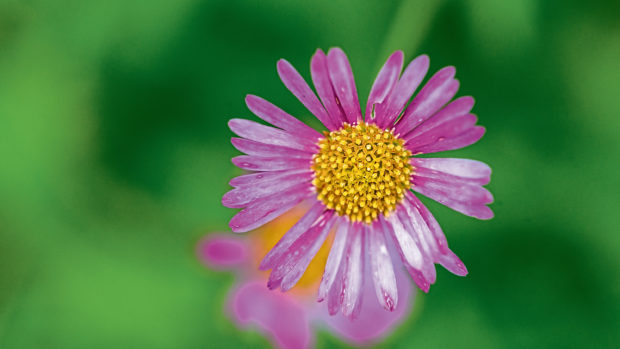
The daisy-like flowers of the Mexican fleabane (Erigeron karvinskianus) have been blooming their heads off since spring and they are still going strong. Given a sunny spot in free-draining soil, this charming little flower will self-seed into cracks and crevices, adding a cheerful note to the garden.
In the 1970s every home had one and there may still be a few Swiss Cheese plants that have survived since then, shoved into spare rooms or palmed off on parents with conservatories when they fell out of fashion, but now being reclaimed again.
If so then they will be enormous specimens and will long since have romped far beyond the confines of the pots they came in.
In the intervening 50 years, new homes have shrunk in size but that doesn’t mean you can’t have a Swiss cheese plant (Monstera deliciosa) if you fancy one because miniature forms are available that are guaranteed not to eat the sofa.
Like their giant cousins, these small versions do best where conditions replicate a tropical environment, which is their natural habitat. That means keeping them watered and placing them in a bright position but away from strong sunlight. In the wild they grow beneath the canopy and their aerial roots are designed to help them cling to surrounding trees as they thrust upwards towards the light.
At home you can gently guide these roots towards a moss pole to provide support and moisture. Alternatively place the plant on a shelf and let the branches cascade downwards.
Deeply cut leaves are the defining feature of the Swiss cheese plant and these can get dusty, but wiping them with a damp cloth is all that’s needed to show them off at their best.
If you do opt for one of the larger varieties, then place it where it will have room to grow. Feed it during the growing season with houseplant food and re-pot it in spring when it outgrows its container.
As it grows your plant will become top heavy, so a sturdy container may be needed to help keep it upright and prevent it from toppling over. Placing the plant’s plastic pot into an earthenware container with gravel and water in the bottom will also help to provide the moist atmosphere that your Monster loves.
And if your plant gets too big for its spot, then cut it down to size and use the off-cuts for cuttings. Severed just below a node, these will root easily in water or compost, giving you several new plants at no cost.

Enjoy the convenience of having The Sunday Post delivered as a digital ePaper straight to your smartphone, tablet or computer.
Subscribe for only £5.49 a month and enjoy all the benefits of the printed paper as a digital replica.
Subscribe